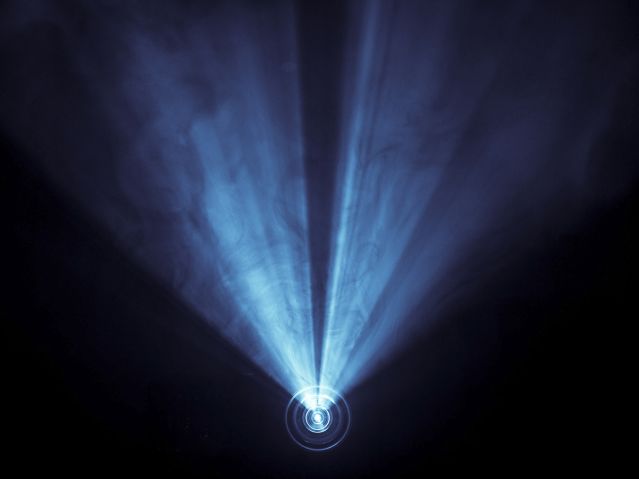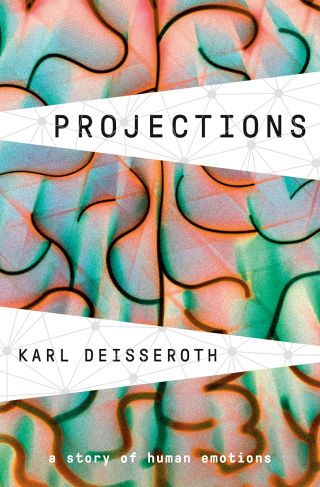Shining a Light
An important new book explains how groundbreaking technology may allow us to alter the brain and perhaps uncover treatments for mental illness.
By Gary Drevitch published July 6, 2021 - last reviewed on July 6, 2021

A young woman sits before a psychiatrist, after being brought to a hospital by her parents with the vague complaint that she is “unable to sit through class.” After a conversation in which the seemingly poised 18-year-old offers little information, the doctor turns toward the door, only to hear her say, “I really don’t think I should be alone right now.” The girl, it turns out, has bulimia, and indeed, when left alone by hospital staff, runs out to the cafeteria to binge and purge.
There is no greater mystery in biology, psychiatry, or medicine than eating disorders, Stanford professor of bioengineering and psychiatry and behavioral sciences Karl Deisseroth writes in his essential new book, Projections. It seems impossible to envision how a human brain could overrule its evolutionary drive to eat, drink, and survive. But what if it isn’t? What if we could not only see which of the brain’s 80 billion neurons are disrupting its routines but, with a beam of light, fix them?
Such goals have propelled Deisseroth’s life’s work. A pioneer in the still nascent field of optogenetics, he has now written a concise and coherent guide to the future of psychiatry and the staggering potential of neuroscience. And yet, for all the confidence he has in the techniques he’s shepherding into practice, his book is tinged with a profound humility built over years of interactions with patients whose minds suffer from implacable corruptions.
Optogenetics enables specialists using light to activate or deactivate specifically targeted neurons in the brain, thereby prompting or inhibiting correlated behaviors or reactions. The process begins with the introduction into specific brain cells of genes from particular bacteria or algae which then direct the creation of proteins that convert light into electrical current—a task foreign to most animal brains. Only specific subsets of neurons are targeted (through what Deisseroth calls “genetic tricks”), making those neurons the only ones able to respond to the pulses of light, which in turn activate or deactivate them.
It’s heady stuff, but make no mistake: This is big. The challenge of psychiatry has always been that, unlike in, say, cardiology, the damage to the patient’s organ—the brain—does not register in a way that can be observed; instead, it resides in an invisible net of neural communication. Optogenetic techniques already enable researchers to “peer into the brain’s inner workings, to explore how internal states of emotion are constructed at the level of cells, and to test how these elements of construction matter,” Deisseroth writes.
Projections brings readers not only into the optogenetics lab but also into the hospital evaluation room, where we find that Deisseroth’s faith in advanced neuroscience solutions is balanced with a commitment to talk therapy. He is suspect of teletherapy, for example, because it lacks the “full information rate” of face-to-face communication. He knows, for example, that when a patient with borderline personality disorder sitting before him is able to raise the hairs on the back of his neck, he’s receiving diagnostic data—a sense of the feelings the patient surely evokes in others in his life, which provides empathy and crucial insight.

It’s through these narratives that one comes to understand why the promise of Deisseroth’s research is so tantalizing. Some of the most challenging patients he encounters in the hospital have been brought low by “fibers failing in virtually the same deep spot of the nervous system.”
In a patient experiencing mania, seemingly brought on by the attacks of September 11, 2001, “new synapses were formed, and older connections were pruned away. Electrical patterns shifted, as scripts were overwritten. For a week his biology silently learned its new tongue, and then it reached out, expressive at last.” The idea of “rewriting” biology is no idle metaphor: The patient barely slept and yet maintained strong brain and physical function; his rewritten synapses had also reset his body’s clock—just one effect of psychiatric illness that optogenetics research has been able to reproduce in mice, and one it could potentially correct.
That hair-raising borderline patient, distraught over both a recent romantic breakup and his parents’ divorce years earlier, had been found rolling around naked on the floor of a bus and had been cutting himself as well. These actions, fitting with the “strange new logic” of his condition, raised a question for Deisseroth—not What makes a human being cut? but What makes any being do anything? If, in borderline patients, personal values change radically, to the point that individuals may desperately seek out intense negativity just because it also comes with agency and control, then perhaps optogenetic techniques could one day set them right. “Neuroscientists can now set these exchange rates,” he writes.
Deisseroth is keenly aware of the more discomfiting implications of his research. Successful optogenetic interventions have already turned satiated mice powerfully hungry or thirsty and driven others into frenzied fits of rage. “What are we, really, when murderous violence can be instantly induced by only a few electrical blips in a few cells?” he asks. But while he knows how a populace raised on sci-fi may regard some of this work, he is sanguine about the field’s future: “Optogenetics is too complex to be a weapon.”
Larger questions remain. The very concept of free will, for example, may be in play in this work. Optogenetics experiments have shown, he writes, “in the starkest of ways, how the choices of action made by an animal can be determined by electrical activity in certain very specific, and very few, neurons deep in the middle of the brain.”
And while advances in optogenetics may lead to effective psychiatric treatments, they may also come to challenge core concepts of consciousness: “We now find ourselves in an astonishing position: We can pick out groups of cells that are naturally active during an experience and then … insert their activity patterns back in without the experience,” Deisseroth writes. In another example he cites, mice sitting in complete darkness can be made to behave as if they are seeing specific visual objects of a researcher’s design. In other words, experience has already been outsourced.
In the psychiatric clinic where Deisseroth still serves shifts as an attending physician, though, these remain concerns for another day, and doctors like him must still rely on their senses and experience to make diagnoses. “All we have to make these judgments are human interactions and words,” he writes. “This is not enough,” but “there is nothing else to do and there is nobody who knows more.”
